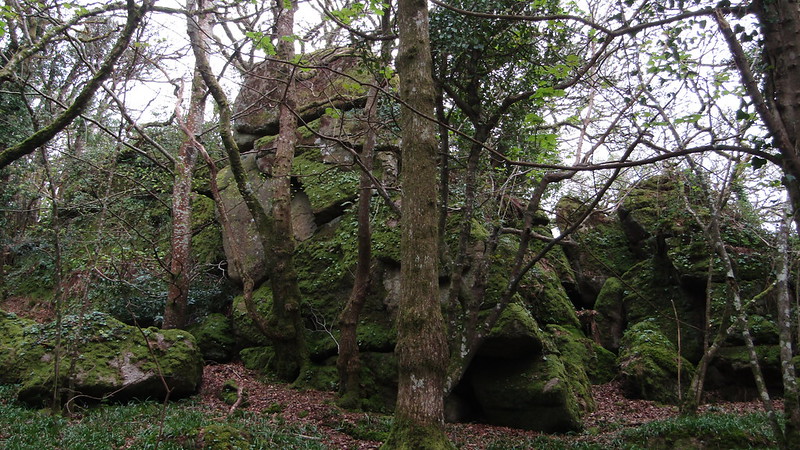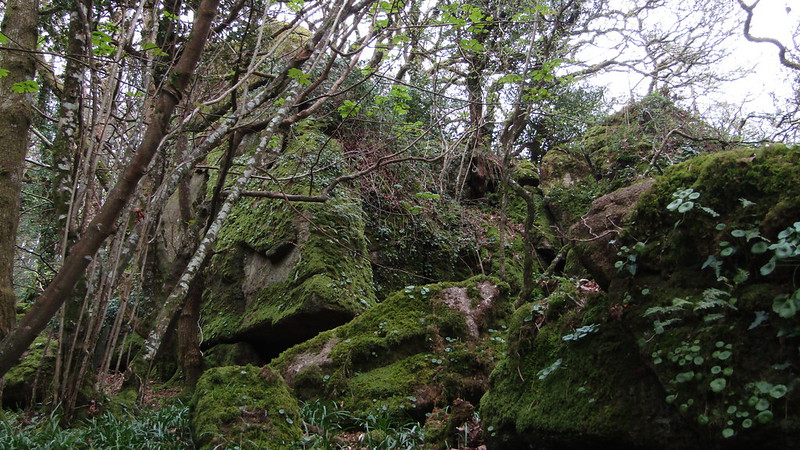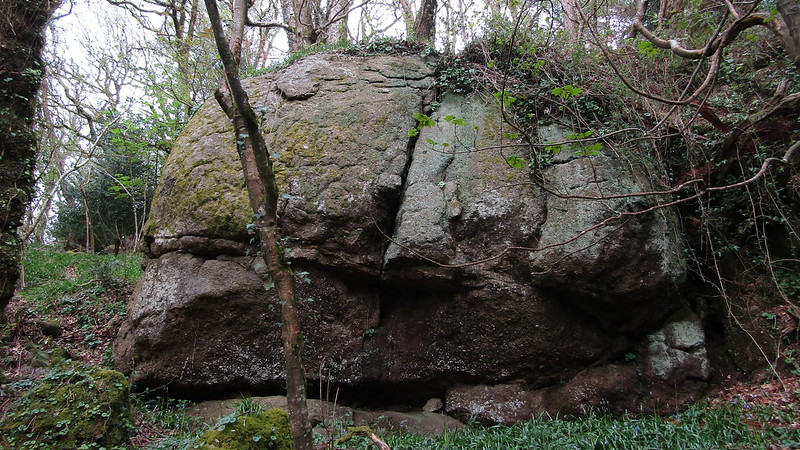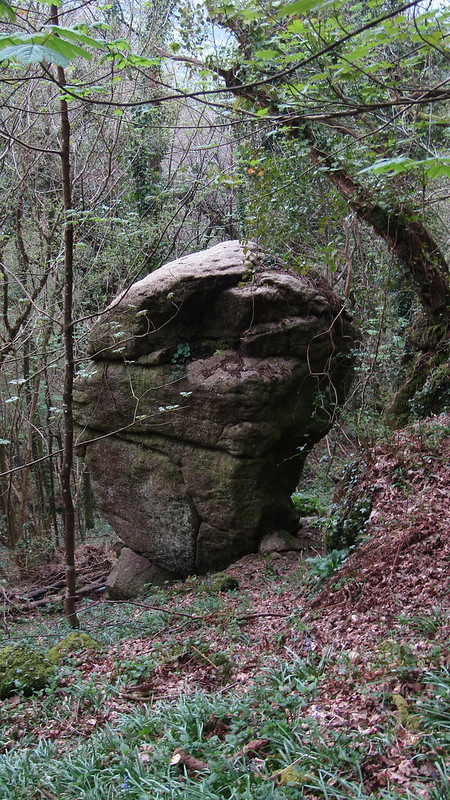TORS OF DARTMOOR
a database of both lesser- & well-known rocks and outcrops
Kelly Mine Tor Despite its proximity to the mine of the same name, this substantial woodland tor appears to have escaped the attention of the visitor for apart being shown clearly as a large outcrop on all editions of OS Maps, it had no name until Tim Jenkinson, using the advice of Steve Jenkins, appropriately called it 'Kelly Mine Tor' in August 2014. What we have here is a beautiful rockpile that begins as a massive tower on the slope of the hill at SX 7969 8183 that were it not for the trees would have commanded a most wonderful view south-westward to Lustleigh village and beyond.  This heralds the start of a mesmerising rock field of massive mossy boulders and outcrops that are strewn all below in spectacular fashion, culminating in a humongous stack of rock above a small path and pipeline at SX 7969 8177 that resembles an alien head! Bulbous rocks dominate the onlooker in this part of the wood and the entire tor is pretty well represented on OS Maps barring the omission of a name. The lowest outcrops are a stone's throw from Warmpit Copse and the large pond there that, via the aforementioned pipe, was used to convey water to Kelly Mine from Bullaton Stream. As the only permanent water supply in the area that didn't dry up in summer it was integral to the success of the mining operations.  This area of East Dartmoor is known for producing a type of iron oxide called micaceous hematite also known, colloquially, as 'shiny ore' that looks a bit like glitter. The mine, which was first mentioned in the 1790s and ceased all operations by 1951, and used no electricity, has several adits in the hillside that are very much still in situ, and in remarkable condition when compared to other sites nearby, having been preserved by the Kelly Mine Preservation Society (KMPS), a group of volunteers that maintain the location for the benefit of enthusiasts. All of that said, people should take a look at the Kelly Mine website first before considering a visit as the area is fraught with hazards and on private property. The mine occasionally has open days whereby guests can see some of the machinery in action.  Kelly Mine Tor is also wholly on private land, but a public bridleway passes quite close to the highest outcrop that is situated just beyond a wall, and near to this and across the right of way is a small ruin which is all that remains of Bullaton Cottage. Brooks (2016, p.24) explains that "Bullaton Cottage, on the hillside above the mine, has no proven connection with the mine despite a strong local tradition that it was the mine captain's house. In 1851 the Hennock census records it being occupied by Samuel Wills, an agricultural labourer with a wife and three young sons. In 1881 farm labourer James Pike was living there, with wife, three children and a lodger."
| ||||||||||||||||||||||||||||